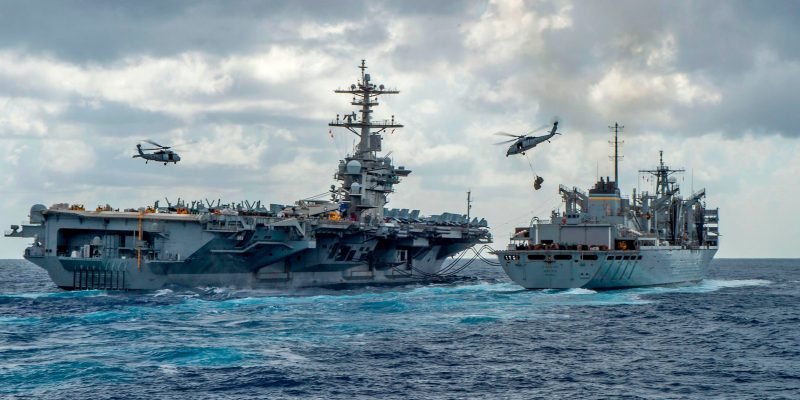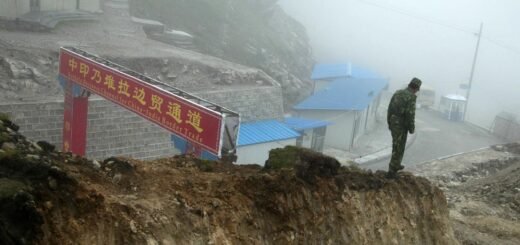China and India in the Indo-Pacific: A Geopolitical Race for Supremacy?

The Indo-Pacific over the course of the past few years has emerged as an area of major interest in world politics. Indian Prime Minister Narendra Modi speaking at the Shangri La Dialogue in June 2018 described the region as extending “from the shores of Africa to that of the Americas”. At this dialogue he also announced India’s Vision for the Indo-Pacific Region, highlighting India’s focus on creating a free, open, inclusive region which enables progress and prosperity for its stakeholders. New Delhi’s increased concentration in the Indian Ocean Region (IOR), a region where it has traditionally enjoyed the status of being the dominant power, is being seen as a direct response to contain the growing Chinese influence in the zone.
Majority of Sino energy imports from the Middle East travel through the Indian Ocean and the South China Sea. Beijing has time and again expressed a desire to have a strategic naval presence in these regions for safeguarding its concerns until an alternative route is available. In recent years, however, through its Belt and Road Initiative (BRI) and ‘Debt-trap’ economic strategy, China has unilaterally threatened to shift the balance of power in the region. It has developed ports in Djibouti and Myanmar, Pakistan and Sri Lanka have become victims of Beijing’s ‘debt trap’ policies handing over vital ports to China, and similar ports are under construction in Burma and Bangladesh. China is also increasingly interested in taking over Kenya’s Mombasa port after the inability of the latter to repay its loan. The Maldives, another strategic island nation in the Indian Ocean, owes China a debt of USD 1.4 Billion.

As evident from multiple instances in history, these island nations are very important from a strategic viewpoint. They act as buffer points or nodes in ensuring the efficient transport of goods and people during times of conflict and peace and hence, are necessary for the secure access of Sea Lanes of Open Communication (SLOCs). Further, they also act as important choke points in naval transportation and are vital bases from where nations can tackle piracy and terrorism in the open seas. Thus, it is natural that the growing spectre of Chinese power in the zone has raised concerns in world politics.
India has become conscious of this shift in geopolitics and has stepped up its efforts to assert dominance in the region. In 2019 India established the Indian Ocean Region division under the Ministry of External Affairs for handling the bilateral relations with “Maldives, Mauritius, Seychelles, Sri Lanka and Indian Ocean Region”. Further, to counter China’s strategies India has responded by establishing close ties with Oman and Seychelles and by developing a naval presence in these countries. The strengthening of ties with other members of the Quadrilateral Security Dialogue (USA, Japan, Australia), often referred to as the Quad, is seen as another step in cementing its position in the IOR. In addition, India has signed agreements for ‘Mutual logistics support’ with the United States of America, France, South Korea and Australia. India, located at the head of the Indian Ocean, also enjoys an unparalleled geographical advantage, which is exactly the reason why it has emerged as the main strategic interest in any discussion regarding the Indo-Pacific.
India has repeatedly expressed its desire to establish a democratic rule-based international order in which all nations, big or small, thrive as equal and sovereign. China’s hard-line presence in the IOR, it feels undermines this vision and India’s own security. While India has been quick to respond to the alterations in the status-quo caused by China, its Indo-Pacific vision will be a great challenge to realise. India does not have the economic capabilities to compete with China in funding major developmental projects in the region by itself. When allied with other Quad members such as Japan in announcing development projects, it has to concede to Japan because of asymmetrical exchange relationship in that partnership and because of Japan’s greater interest in the eastern Indo-Pacific as compared to India’s greater concerns in the Western part of the same region. Further, India has to tread carefully and diplomatically so as to not overly rile China by appearing to be camped with the West in ‘containing China’. With many of the island nations becoming increasingly aware of Chinese intentions, they have once again turned to India to provide security in the IOR. The US has also recently imposed sanctions on China’s BRI projects in the South China Sea region. As more and more powers get involved in the geopolitics of the Indo-Pacific, and existing powers show a shift in alignments it would be interesting to see how the future of this massively important zone of the global economy unfolds.


















